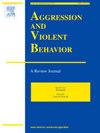将犯罪行为与行为联系起来的方法:文献综述
IF 3.4
2区 心理学
Q1 CRIMINOLOGY & PENOLOGY
引用次数: 0
摘要
本文回顾了犯罪关联文献,以确定如何对数据进行分析前处理、用于预测关联状态/序列成员资格的方法,以及用于评估关联预测准确性的方法。本文检索了 13 个数据库,共有 77 篇论文符合纳入/排除标准。用于数据预处理的方法有人工判断、相似度量(包括机器学习方法)、空间和时间测量以及莫肯缩放。雅卡德系数和其他相似性度量(如时间接近性、犯罪间距离、相似性向量)是最常用的数据预处理方法。预测关联状态的方法多种多样,包括人工(专家)判断、逻辑回归、多维缩放、判别函数分析、主成分分析和多重对应分析、贝叶斯方法、模糊逻辑和迭代分类树。评估关联预测准确性的常用方法是计算命中率,但也使用排序列表中的位置,接收者操作特征(ROC)分析已成为评估准确性的常用方法。本文章由计算机程序翻译,如有差异,请以英文原文为准。
Methods used to link crimes using behaviour: A literature review
This paper reviews the crime linkage literature to identify how data were pre-processed for analysis, methods used to predict linkage status/series membership, and methods used to assess the accuracy of linkage predictions. Thirteen databases were searched, with 77 papers meeting the inclusion/exclusion criteria. Methods used to pre-process data were human judgement, similarity metrics (including machine learning approaches), spatial and temporal measures, and Mokken Scaling. Jaccard's coefficient and other measures of similarity (e.g., temporal proximity, inter-crime distance, similarity vectors) are the most common ways of pre-processing data. Methods for predicting linkage status were varied and included human (expert) judgement, logistic regression, multi-dimensional scaling, discriminant function analysis, principal component analysis and multiple correspondence analysis, Bayesian methods, fuzzy logic, and iterative classification trees. A common method used to assess linkage-prediction accuracy was to calculate the hit rate, although position on a ranked list was also used, and receiver operating characteristic (ROC) analysis has emerged as a popular method of assessing accuracy.
求助全文
通过发布文献求助,成功后即可免费获取论文全文。
去求助
来源期刊

Aggression and Violent Behavior
Multiple-
CiteScore
7.50
自引率
4.30%
发文量
63
期刊介绍:
Aggression and Violent Behavior, A Review Journal is a multidisciplinary journal that publishes substantive and integrative reviews, as well as summary reports of innovative ongoing clinical research programs on a wide range of topics germane to the field of aggression and violent behavior. Papers encompass a large variety of issues, populations, and domains, including homicide (serial, spree, and mass murder: sexual homicide), sexual deviance and assault (rape, serial rape, child molestation, paraphilias), child and youth violence (firesetting, gang violence, juvenile sexual offending), family violence (child physical and sexual abuse, child neglect, incest, spouse and elder abuse), genetic predispositions, and the physiological basis of aggression.
 求助内容:
求助内容: 应助结果提醒方式:
应助结果提醒方式:


